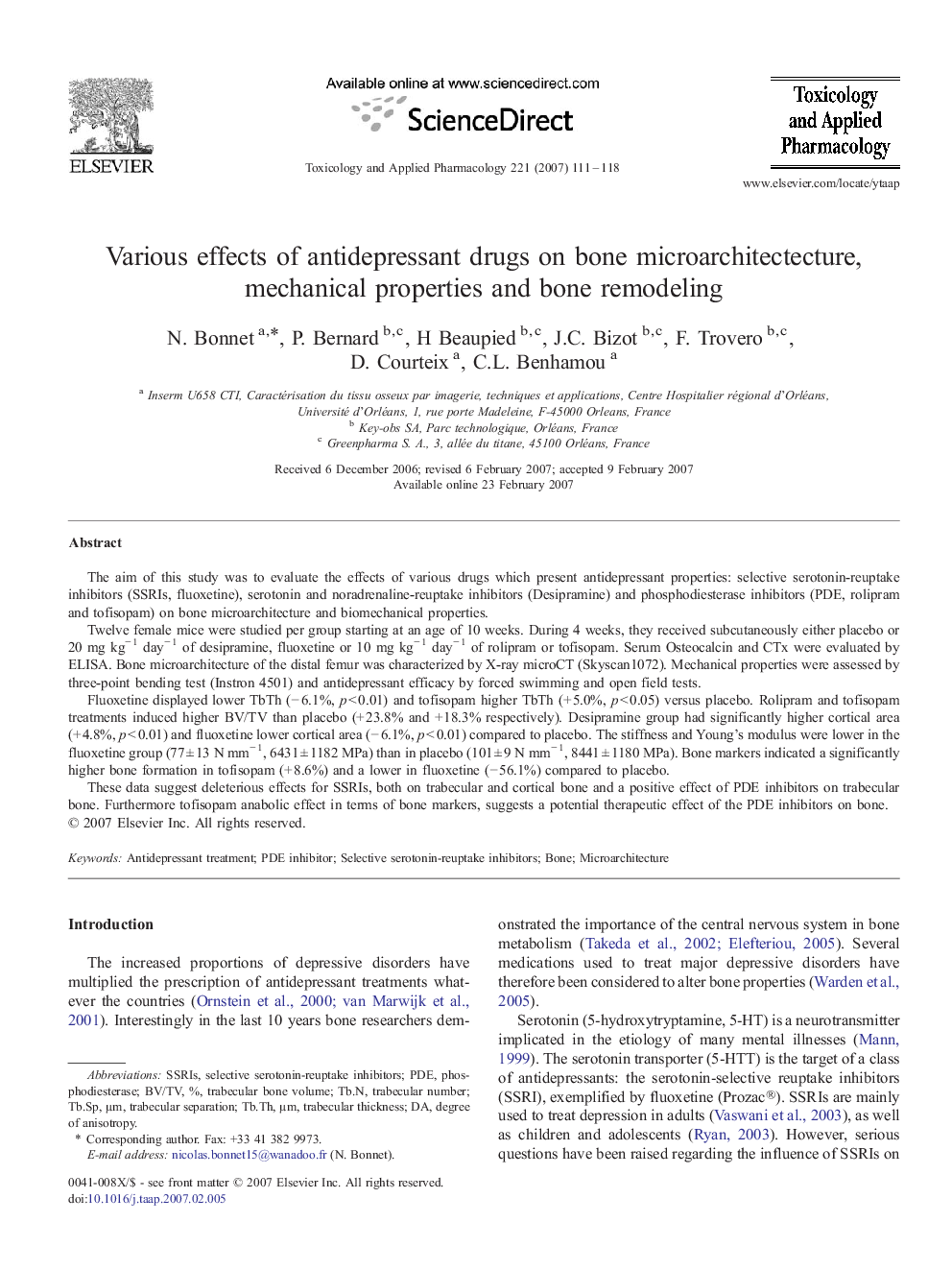| Article ID | Journal | Published Year | Pages | File Type |
|---|---|---|---|---|
| 2571525 | Toxicology and Applied Pharmacology | 2007 | 8 Pages |
The aim of this study was to evaluate the effects of various drugs which present antidepressant properties: selective serotonin-reuptake inhibitors (SSRIs, fluoxetine), serotonin and noradrenaline-reuptake inhibitors (Desipramine) and phosphodiesterase inhibitors (PDE, rolipram and tofisopam) on bone microarchitecture and biomechanical properties.Twelve female mice were studied per group starting at an age of 10 weeks. During 4 weeks, they received subcutaneously either placebo or 20 mg kg− 1 day− 1 of desipramine, fluoxetine or 10 mg kg− 1 day− 1 of rolipram or tofisopam. Serum Osteocalcin and CTx were evaluated by ELISA. Bone microarchitecture of the distal femur was characterized by X-ray microCT (Skyscan1072). Mechanical properties were assessed by three-point bending test (Instron 4501) and antidepressant efficacy by forced swimming and open field tests.Fluoxetine displayed lower TbTh (− 6.1%, p < 0.01) and tofisopam higher TbTh (+ 5.0%, p < 0.05) versus placebo. Rolipram and tofisopam treatments induced higher BV/TV than placebo (+ 23.8% and + 18.3% respectively). Desipramine group had significantly higher cortical area (+ 4.8%, p < 0.01) and fluoxetine lower cortical area (− 6.1%, p < 0.01) compared to placebo. The stiffness and Young's modulus were lower in the fluoxetine group (77 ± 13 N mm− 1, 6431 ± 1182 MPa) than in placebo (101 ± 9 N mm− 1, 8441 ± 1180 MPa). Bone markers indicated a significantly higher bone formation in tofisopam (+ 8.6%) and a lower in fluoxetine (− 56.1%) compared to placebo.These data suggest deleterious effects for SSRIs, both on trabecular and cortical bone and a positive effect of PDE inhibitors on trabecular bone. Furthermore tofisopam anabolic effect in terms of bone markers, suggests a potential therapeutic effect of the PDE inhibitors on bone.
